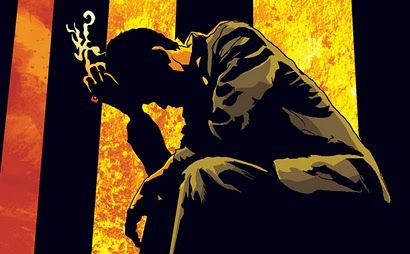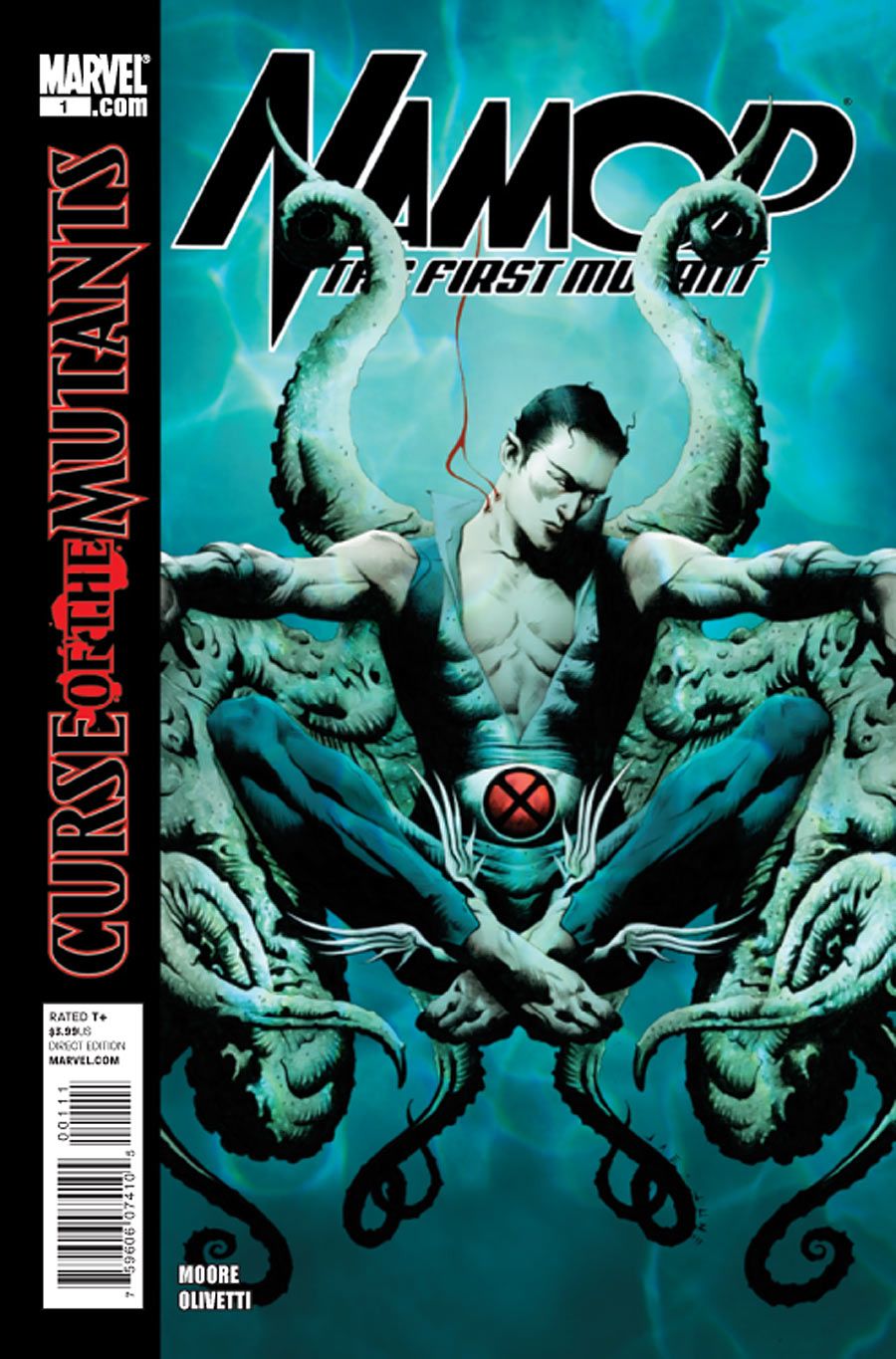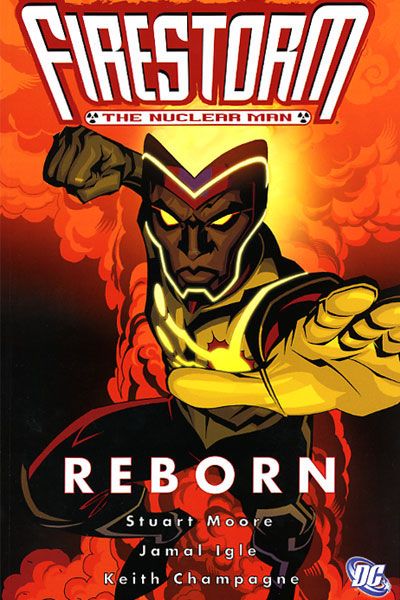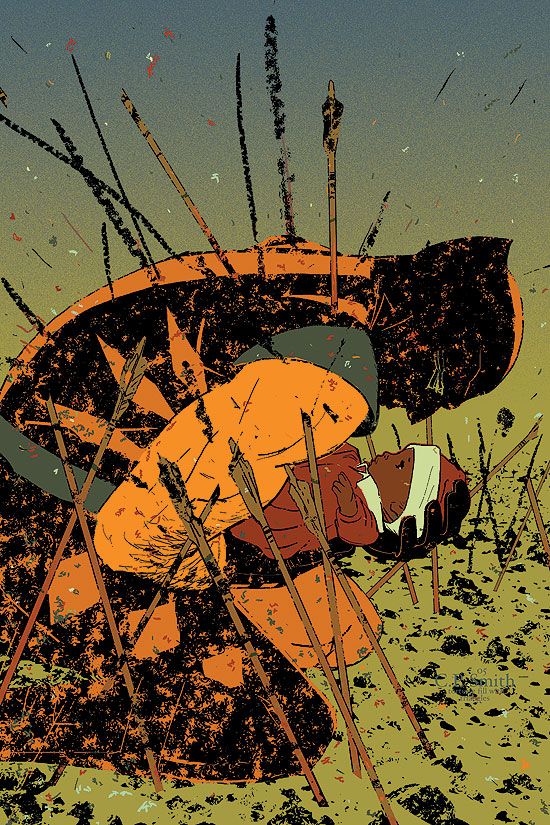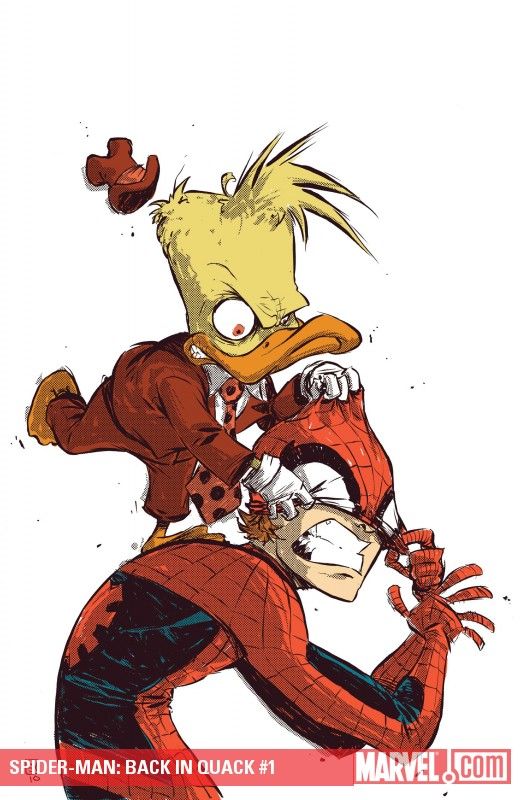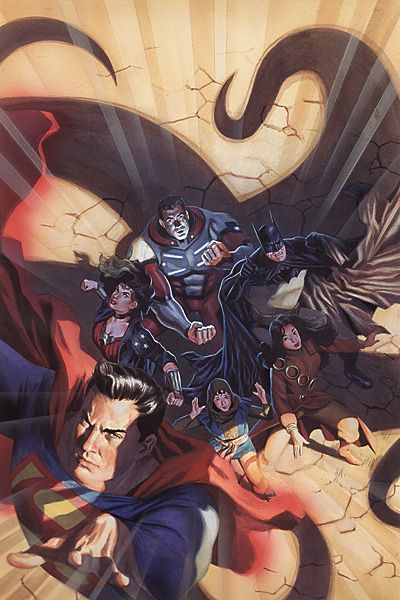In the first part of my interview with Stuart Moore we covered the editorial phase of his career. In this second part, Moore and I discuss the freelance writing phase, which began in 2002. As part of this discussion, we discuss his plans for the new Namor: The First Mutant (previewed here by CBR and launching this Wednesday, August 25); Spider-Man: Back in Quack (A Howard the Duck-connected one-shot coming out September 15); his creator-owned collaboration with artist Jon Proctor, Shadrach Stone (also coming out on September 15 [Penny Farthing Press]); and his role as co-writer of the six-part JLA/The 99 miniseries (which launches on October 27) .
Tim O’Shea: Was there any one catalyst (or a number of factors) that prompted you to step fully into the freelance world and focus on your own writing in 2002?
Stuart Moore: It just seemed like the right time. I'd worked on a lot of really interesting projects, very fast, at Marvel, and the deal for PARA (at Penny-Farthing Press) came together. I decided if I was ever going to make a go of it as a writer, it should be now.
O’Shea: How did your projects at Penny-Farthing Press (including Para and Zendra) come to pass?
Moore: I first made contact with Penny-Farthing, a long time ago, when I was involved in the startup of a dot-com-style comics company that never fully came together. I really like the people who run Penny-Farthing; they're very straightforward and honest, and they do beautiful production work. ZENDRA was a project created by two artists, and they needed someone to come in, flesh out the basic story, and write the scripts. A couple of years later I pitched PARA to them and they liked it, and that led, more recently, to SHADRACH STONE.
O’Shea: I really enjoyed Lone, your project with artist Jerome Opena, back in 2004. I never understood why that miniseries and the Rocket Comics (Dark Horse imprint) overall did not meet with greater success. What do you recall from that creative experiment?
Moore: I loved working with Jerome and with Dave Land, the editor. And the mix of western and horror genres was just a lot of fun. On a publishing level, Rocket was a nice experiment, but in retrospect a tough one to make work through the direct market. It was supposed to be aimed at younger readers, but that's a very difficult demographic to reach with new properties that don't have mass licensing attached to them. LONE was the best selling of the Rocket books, but ultimately that wasn’t enough to keep it going.
O’Shea: Care to discuss 2004's Giant Robot Warriors (with Ryan Kelly)? Your workload is so diverse, later when you were working on Avengers/Transformers, AiT/Planetlar re-released the work. Do you wish more publishers would think to market your past work that may strike a similar chord with your present day releases?
Moore: Haha! Everyone assumed that was the reason for the rerelease. Actually, I'd suggested the book be reissued for election season, because it's basically a political satire (with giant robots). The rerelease came out a little later than planned, and in the meantime I got AVENGERS/ TRANSFORMERS, so it looked like we'd planned that all along.
Sure, I love the idea of rereleasing and re-promoting old work. But again, the market is crowded. Publishers have to pick their shots.
O’Shea: I'm a firm believer that creators can have a great run on a book without the value of the run being rooted in sales (unfortunately the comic book company accountants would take issue with my metrics). You and artist Jamal Igle seemed to effectively click on Firestorm (despite having to juggle editorially mandated events like One Year Later)--looking back on that series why did you and Igle work well together?
Moore: Thanks. We just really liked working together, from the start. We had very similar ideas about the Jason Rusch character, but even more than that, Jamal's just one of those artists who can draw anything -- beautifully, dynamically, in classic comics style. He really spoiled me.
I'm actually writing Firestorm again, briefly, in the JLA/99 crossover, which starts in October. That's interesting because the character's changed so much.
O’Shea: I never realized you once collaborated with Cully Hamner--can you explain what Pieces De Rechange (Spare Parts) (from a 2005 Metal Hurlant anthology) was?
Moore: I love that story and unfortunately it's only been published in French. It's about a body double to a Saddam-Hussein-style dictator. It started from a very simple idea: What if you live in a dictatorship, the old dictator is assassinated, you see the new ruler's face -- and he looks just like you? You'd know: Your life, as you knew it, is over -- you're going to be conscripted as his double. The story proceeds from there.
I probably did more research per panel on that 8-page story than on anything else I've ever written, and Cully absolutely killed on it. It’s beautiful.
O’Shea: Some of your work appeals to a more international audience--I'm thinking of your work on Teshkeel's The 99. Did you adjust your writing approach with this work--and as a U.S.-based creator how odd does it feel to write a project that was far more successful (and targeted to) outside the United States?
Moore: The 99 should be a little more visible in the U.S. after the animated series debuts on the new Hub network. Yes, there are some different sensibilities at work. The book has to be acceptable to several different middle eastern countries, so we have to be very careful about things like violence and the nature of interpersonal relationships. Beyond that, it's a kids' comic, which I enjoy, though I haven't written them extensively.
The overarching theme of The 99 is tolerance and cooperation among different cultures and countries, which is a pretty easy message to get behind. It's also fun to take some of the tropes and plot devices of American comics and adapt them to a different setting and cultural backdrop.
O’Shea: A few years back when you and I discussed your work on Fox Atomic's Nightmare Factory, you and I briefly addressed the immediate feedback of one's work--thanks to the Internet. But even back then you took criticism with a grain of salt: "In general, though, I like feedback of any kind. I think I’ve gotten good at reading reviews and thinking, “Ah, good point,” or “No, you just missed it” or “Okay, that one wasn’t for you.” How long did it take you to learn that lesson, did you learn it while you were an editor?
Moore: Oh, I found it easy to take criticism as an editor. For one thing, you're not as intensely invested in the work as the writer is. For another, most people don't notice the editor, so you're not the target of attacks unless you really start saying controversial things. And finally, even fewer people really know what an editor does; so the criticism you do get is generally not very relevant.
But I was one of the first editors to engage with the internet -- I was actually Vertigo's “online representative” in the mid-90s. So I learned what to do and not to do very quickly. For instance: Don't post after even one drink. Don't do it. (Admittedly, Facebook and Twitter make this a very hard rule to stick with.)
As a writer, it’s harder to maintain a distance from criticism...it hits you much closer to the bone. But you don’t survive long in this industry without a pretty tough skin.
O’Shea: Who first paired you with CP Smith at Marvel--and how quickly did they realize it was a good fit (your work together most recently was Wolverine Noir)?
Moore: Axel Alonso paired us up for a short Wolverine story in X-MEN UNLIMITED, some years ago, which led to WOLVERINE #41 -- probably the story I've gotten the most attention for. CP contacted me while he was working with Wildstorm and said he'd like to work together again, so I set up WOLVERINE NOIR with Marvel. I love working with the guy -- he's one of the most powerful stylists in comics today. Hopefully we'll get together on something again soon.
O’Shea: Do you think your recent work on Deadpool opened the door for you to work on the Howard the Duck one-shot--or did that come together because of your editorial work on Steve Gerber's MAX project. What was Gerber like to work with--was he wary of collaborating with Marvel again?
Moore: That’s about three different questions...let's see. DEADPOOL TEAM-UP and the Spidey/Howard special were done for two different editorial groups, so it's probably a coincidence. But I do love to write humorous comics scripts, and there aren't as many opportunities as I'd like. That's one of the great things about the current popularity of Deadpool.
BACK IN QUACK: Steve Wacker and I were talking about various Spider-Man-related projects and I suggested using Howard. He did know of my past with the character, but more importantly he liked the story I pitched, and we were off.
Steve Gerber was wary of Marvel when I worked with him on the Howard mini in 2001 or so; but the actual experience went pretty smoothly. Phil Winslade was both enormously enthusiastic and the perfect artist for the book. It didn't really catch fire commercially, and we had a few bumps along the way, but I’m very proud of the final issue in particular.
O’Shea: In your recent CBR interview about the upcoming Namor series, you mention a current affinity for the writing of Robert E. Howard. You also acknowledge that you're aiming for a horror/action tone with this Namor series. Add to the mix the fact he's closely tied to the mutant world these days and it's clearly a recipe for a very different Namor than we've read before. Simple question first, when scripting an underwater fight scene do you catch yourself rejecting certain aspects, conceding "that doesn't work in water".
Moore: Let's see: We start with a few conceits, the main one being that the Atlanteans can talk to each other underwater through some combination of sounds, gestures, and possibly mild telepathy. As for fight scenes: I don't always consciously think about the differences, but people fighting underwater can effectively "fly," attack and defend from all directions -- and then they can also float off when they retreat, or when they're defeated. It's a pretty versatile and visually interesting set of rules, actually.
O’Shea: Amphibious vampires--what makes them different than your garden variety vampire--and what freedoms does that afford you in writing when you get to go into relatively unchartered (pun intended) vampire waters?
Moore: Without giving too much away: The Aqueos, the underwater vampires, are a mixture of "turned" Atlanteans, other undersea races, and very old beings who've evolved in the deepest oceans, eons ago. They draw sustenance from the sea itself, and as the story proceeds, we'll learn more about how they work and how they evolved.
O’Shea: Any plans for setting up a base of operations on land and on sea for Namor, or is he going to be too busy to be setting up shop anywhere?
Moore: We have some long-term plans for that, which we're coordinating with the X-Men group. Namor will continue to be affiliated with New Atlantis, the colony that’s being built under the X-Men’s island headquarters.
O’Shea: The recently returned Steve Rogers is fairly powerful on land (from a U.S. government standpoint) and he has a rich history with Namor. Are you looking to utilize him in an upcoming arc, or are you leaving the Steve and Namor reunion to other books?
Moore: That's a really good idea. I'm not sure yet. There’s an upcoming Marvel event that might lead to that.
O’Shea: What's the key to writing a funny Howard the Duck story. Howard's comedy is not easily achieved (ask George Lucas). Does Howard's comedy mesh or conflict with the comedic stylings of Spidey?
Moore: That was the key to the whole story, actually. One of Spider-Man's strongest traits is his humor -- I always say that the most important thing about writing Spidey is making sure his jokes are funny. But it's a gentle, everyman kind of humor, aimed at tweaking his enemies and knocking them off their high horses. Howard the Duck's humor is harsher, more trenchant, and directed much more at the larger institutions and power structures of our society. The two characters manage to find common ground in this story, thanks to (a) a radically altered group of old Howard-the-Duck enemies, and (b) the general cluelessness of Mayor J. Jonah Jameson.
O’Shea: When writing comedy like Howard, how much do you have depend on the artist to carry out your intent (and sometimes take the comedy even further than your original intent)?
Moore: Howard's humor is largely verbal, and that's mostly my job, though bad visual storytelling can kill even the best jokes. With every script I write, I try to lay down the foundation and let the artist design most of the house. And I always trust Mark Brooks to follow through; he did a gorgeous job on our recent CLOAK & DAGGER special.
O’Shea: Was there an internal struggle for your creative soul prior to pitching the tiny-size Man-Thing story?
Moore: More like a momentary twinge of doubt about my masculinity. But seriously: Howard the Duck's first solo stories appeared in the back of GIANT-SIZE MAN-THING. This seemed like a nice way to close the circle, especially since both stories are, in a way, tributes to the work of Steve Gerber. It was also a nice chance to work with artist Joe Suitor again.
O’Shea: Can you breakdown the cast on JLA/The 99 as well as the creative team?
Moore: Fabian Nicieza and I are co-writing JLA/99, which debuts in October, timed to coincide with The 99 animated series' debut on the new Hub network. We're having a blast with it; I haven't collaborated very often, but Fabian and I just throw ideas off each other and take turns writing scenes, then polish it all up. It's been a remarkably smooth process.
The artist on JLA/99 is Tom Derenick, who's perfect because he's both dynamic and at home with a huge cast of characters. The book features most of the current JLA and 99 members, spread out across the globe as a gigantic menace strikes in several places at once. It's big and crazy and fun.
O’Shea: How many years have you been developing Shadrach--how good does it feel to dip your toes again into creator-owned work?
Moore: I've been working on SHADRACH STONE for a long time. I've played with it in several different media, adding layers of myth and symbolism every time I returned to it. It's the most ambitious work I've ever attempted.
In brief: SHADRACH STONE is the story of the biggest liar in the world, who finds that -- after a particularly traumatic day in recent history -- he can no longer lie. He then becomes enmeshed in a secret conspiracy involving alternate worlds, and the lies that keep them going. It's also a fable for America in the 21st century.
I'm always working on creator-owned projects on the side; I have four or five others in various stages of development right now, mostly with artists attached. The trick is finding enough money to pay the artists to complete them. But sometimes it's essential to just take a step backward and work on something that's wholly your own, even if you're not sure where it's going to lead you.
O’Shea: As it gets closer to publication will you be creating new posts at the Shadrach Stone production blog?
Moore: The Shadrach Stone blog has just recently been relaunched. It features exclusive art and lots of behind-the-scenes stories. I’ll be updating it through publication, and least, and I’m hoping to get artist Jon Proctor to contribute some entries, too.
O’Shea: What makes Jon Proctor a good fit for the project?
Moore: Jon loved SHADRACH from Day One, which helps, of course. He's a great real-world artist, but he also brings the larger, mythic dimension of the story to life. His color work is some of the finest in the business, too, and this really lets him show off what he can do. He's absolutely my partner in this book; he's lived with it full-time longer than I have, at this point.
Penny-Farthing Press has been an invaluable partner on this project, too. They've given Jon the tools he needed to finish the book, and they're determined to adapt it to other media, too. I’m working closely with them on that.
O’Shea: After several years as a freelance writer, are you pleased with your creative growth?
Moore: I'm never satisfied, if that's what you mean. But I think I'm a better writer than I was when I started, and I think I'm still improving. I really like working in a variety of genres and formats, and hopefully I'll be able to continue doing that for a long time to come.

